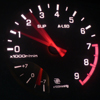Contaminated Fuel - Help !
Announcements
-
Similar Content
-
Latest Posts
-
Off the back of feedback we have decided to mix up this next Motorkhana at Avalon to have some targeted skills practice for beginners to advanced. Saturday 8th February 2025 8:30am Capped 26 entries Standard Entry Fee: $89 Members Entry Fee: $55 (SAU Victoria Only) Entries Close: Thursday 6th February 8th Where: 55 beach road Avalon. https://maps.app.goo.gl/HNUE3EuNue3sJxh38 Entries: Limited to 26 entrants (Passengers allowed over the age of 14 with a signed disclaimer and same safety gear) Disclaimer: Download Please electronically sign and email to [email protected] or print and hand in and Driver Sign In. email [email protected] To compete in this event you will require A valid AASA General Speed licence or (Day license via the AASA Website for $50) MA Licenses are no longer accepted by AASA https://aasa.com.au/ A helmet, long sleeve clothing and it is reccommended a 1KG mounted fire extinguisher (But not Mandatory). Further details within Supp Regs on the enty link. You can bring and have a passenger in the car but they need to comply to the same safety and clothing as driver. Bring your car and get to battle others, win, lose or draw. I can guarantee you will have lots of fun. Any questions email [email protected] Entry List:
-
Just yesterday the car started to shake a bit when idle. So tomorrow ima test the some wires and packs with the multimeter and see what it is. Hopefully is a pack because thats the easiest thing to buy same day here where I live in the USA.
-
shot myself in the leg and now last night I have shaking when I idle lol
-
I'm not a big fan of the Cometic gaskets either, as above the head and deck need to be like a mirror (can't remember the RA) so Kamieri sounds like a good idea. FWIW a mate of mine hordes old motor stuff and has some blank unground Nizmo cams for one of these in his supply if random shit if you're interested.
-





Recommended Posts
Create an account or sign in to comment
You need to be a member in order to leave a comment
Create an account
Sign up for a new account in our community. It's easy!
Register a new accountSign in
Already have an account? Sign in here.
Sign In Now